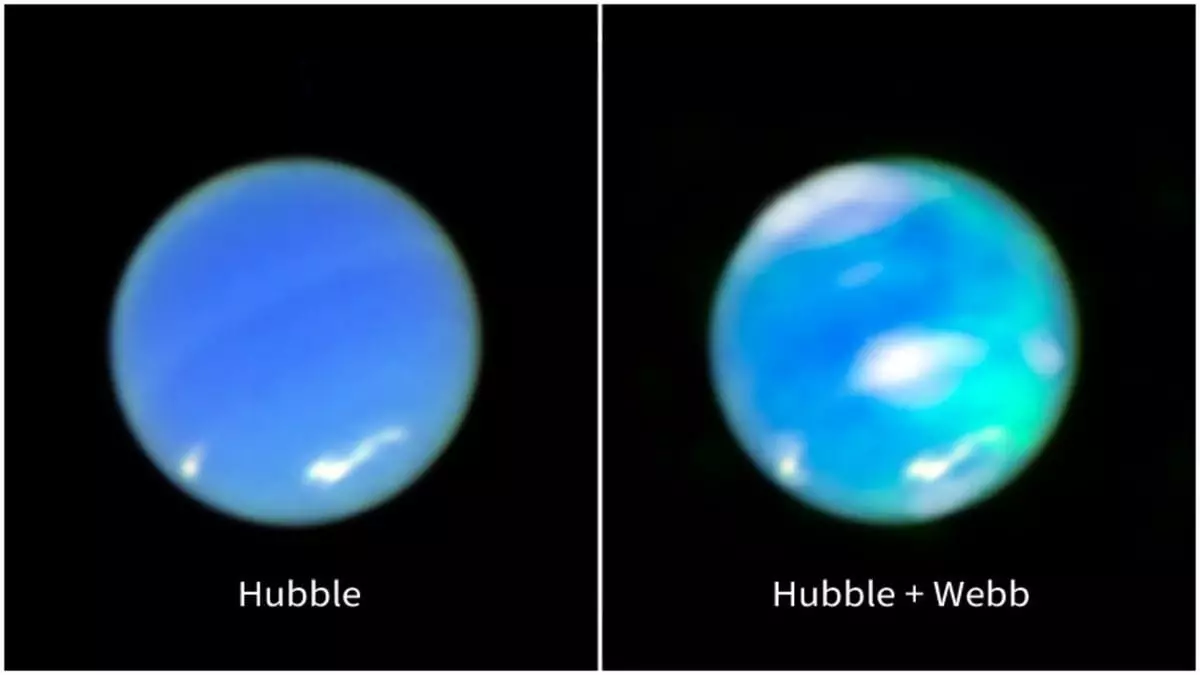For centuries, Neptune, the furthest planet in our solar system, has remained a tantalizing enigma, shrouded in mystery and speculation. Recent advancements through the James Webb Space Telescope (JWST) have shattered this veil, revealing the breathtaking and elusive auroras of this icy giant. This breakthrough not only confirms decades of theories but also challenges our understanding of planetary atmospheres across the solar system. The JWST’s ability to capture such clear images of Neptune’s auroras marks a significant advancement in astronomical science, allowing us to peer into the dynamic atmospheric phenomena that dictate Neptune’s unique character.
Beyond Expectations: The Auroral Anomaly
Unlike Earth’s magnetosphere, where auroras dance around the poles, Neptune’s auroral activity manifests in surprising locations across its atmosphere. This unexpected distribution stems from the planet’s peculiar magnetic field, which, due to its tilt and offset, diverts solar particles in erratic trajectories. As a result, Neptune becomes a canvas for dynamic auroral displays, a distinct pattern that contrasts sharply with the more predictable auroral behaviors of Jupiter and Saturn. This anomaly is not merely a scientific curiosity; it underscores how planetary environments can differ dramatically due to varying magnetic characteristics, reshaping our views on similar gas giants.
Groundbreaking Discoveries Fueling Future Exploration
Central to this new understanding of Neptune’s auroras is the detection of the trihydrogen cation (H₃⁺), an ion emblematic of auroral activity across the gas giants. The excitement within the scientific community is palpable; scientists have long suspected its presence based on historical data from Voyager 2, which lacked the capacity to confirm it visually. This advancement invites an evolution in astronomical methodology—considering the need for infrared-sensitive technology in future explorations. The revelation that Neptune’s upper atmosphere has cooled significantly since Voyager 2’s flyby raises further questions about the atmospheric dynamics changing over time. The implications of such cooling are profound, indicating not just a shift in the current environment, but beckoning a broader investigation into the climatic evolution of gas giants.
Setting a New Benchmark for Planetary Science
JWST’s monumental achievement in capturing the auroras of Neptune has set a new frontier for planetary science, opening up vast possibilities for understanding our solar system. As Leigh Fletcher, a planetary scientist at the University of Leicester, aptly puts it, the JWST has established a “benchmark” for future astronomical missions. This momentum should inspire a renewed commitment to explore our outer planets in detail, utilizing advanced technologies that can detect phenomena previously obscured from view. It is time we acknowledge that many of our previous assumptions, derived primarily from ground-based observations, may be fundamentally limited in scope.
In summation, the intricate dance of Neptune’s auroras is not just an aesthetic marvel; it challenges our scientific paradigms, demanding deeper inquiry into the cosmic processes that govern our solar system. Science, fueled by curiosity and innovative technology, is on a path toward redefining our understanding of the universe. The confirmation of these dramatic auroras is a reminder that the boundaries of our knowledge are still fluid, and it is through exploration and discovery that we can aspire to unravel the universe’s grand tapestry.


Leave a Reply